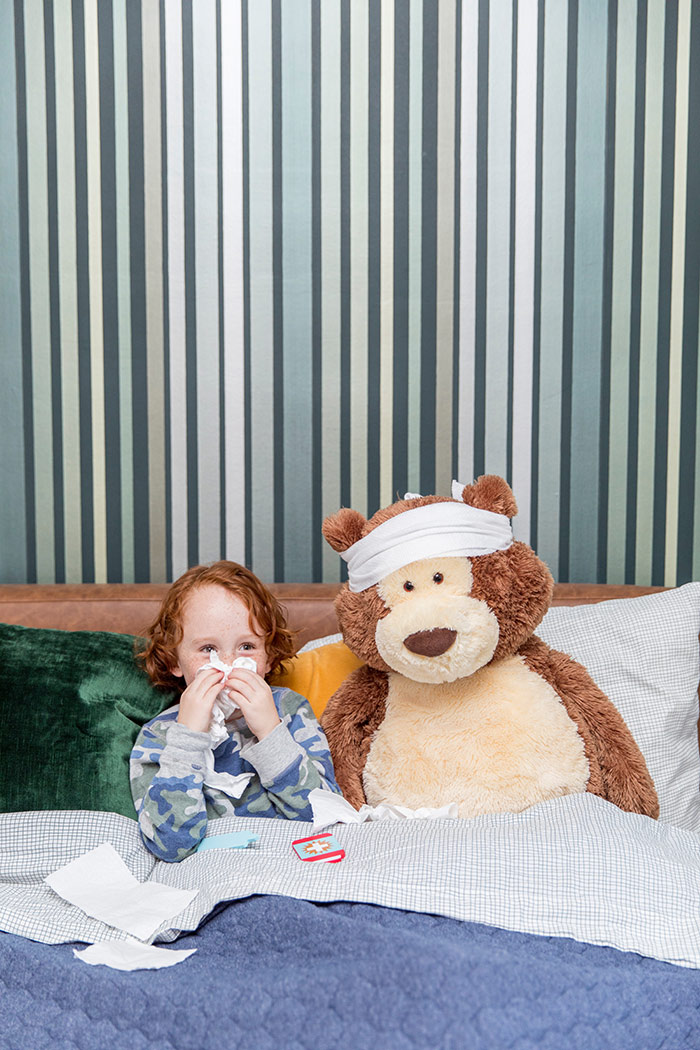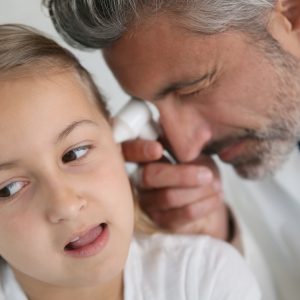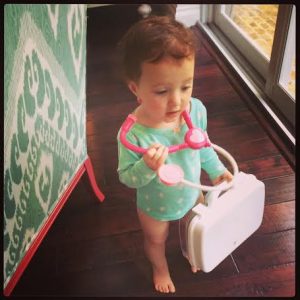
4 Fever Facts You Need to Know
It’s time to talk fever facts. Does this scenario sound familiar?
It’s bedtime, and your child has a fever of 102.5° F. You grab a fever reducer from the medicine cabinet, find the appropriate dose for your child’s weight or age, and administer it to your child. The fever goes down, and you put your child to bed. At midnight, you hear crying from your child’s room. It feels like the fever is back. What can you do? You can’t give the same fever reducer yet, and now your child’s fever is at 103° F.
If you’ve ever been in this situation, you’re not alone!
My patients’ parents describe this scenario to me in the ER all the time. Trying to control your child’s fever can be overwhelming and stressful. In fact, thousands of parents come to the ER each year because they are scared about their child’s high fever when they are unable to control it at home.
So what can you do when a similar situation arises for your child? Let me break down some fever facts and provide some guidance to help you.
4 Must-Know Fever Facts
In order to successfully treat your child’s temperature, it is imperative to not only understand what fever is but also the medicines used to control it. So let’s get started!
1. Fever is not necessarily a bad thing!
Fever is the body’s natural way of fighting off infection. It is actually a good sign that your body’s immune system is strong and having an appropriate response.
Many parents worry a high temperature causes damage to the brain or body, which is not the case generally, unless the fever is higher than 107.6° F.
There are many reasons why your child may have a fever, some as simple as a virus. However, having a fever can make your child feel very uncomfortable, causing decreased activity, appetite, and thirst.
Treat your child’s symptoms, not a number.
If your child is happy and playful, even with a fever, it may not be necessary to treat the fever. If your child is down and uncomfortable, consider giving an over-the-counter (OTC) fever-reducing medication to help your child feel more comfortable and willing to at least drink fluids.
2. Your little one might feel warm but not necessarily have a true fever.
A child’s temperature will vary throughout the day and with different activity level. Most children’s temperatures will be the highest later in the afternoon into early evening.
If you feel your child might have a fever, take their temperature. If your child is younger than 3 years old, the most accurate way to see if they have a fever is by taking their rectal temperature. Once your child reaches age 4, taking their temperature by mouth is acceptable.
So what temperature is considered a true fever?
- Rectal, ear, or forehead reading of 100.4° Fahrenheit (38° Celsius) or above
- Oral reading of 100° Fahrenheit (37.8° Celsius) or above
- Under arm reading of 99° Fahrenheit (37.2° Celsius) or above
If your child is under 2 years of age, always contact your pediatrician or pharmacist for correct dosage information before giving an OTC fever reducer.
If your baby is 3 months old or younger with a fever of 100.4° F or higher, call your pediatrician immediately.
3. When using fever-reducing medicines, always dose accurately and safely.
Before giving your child an OTC fever reducer, always read the Drug Facts label found on the medicine’s box or bottle to ensure correct dosage. It is also important to check the active ingredients listed on the Drug Facts label of your child’s medicines to see if they contain the same ingredient (e.g., acetaminophen). Be careful not to give your child two medicines containing the same active ingredient.
If you have any questions, ask your pediatrician or pharmacist before giving the medicine to a child.
8 out of 10 parents have given the wrong dose of liquid medicine to their children at some point by accident.*
*according to a recent National Institutes of Health (NIH) study
To ensure proper dosing every time, only use the dosing device that comes with the medicine. Never ever use a kitchen spoon – it is never appropriate to substitute for the dosing device that comes with the medicine. And remember to dose your child based on their weight, not their age, when the Drug Facts label says to do so. Click here for more safe dosing tips.
And speaking of dosing…dosing fever reducers for an adult and for a child are completely different! Always have children’s medicines on hand – never give adult medicines to children.
As always, remember to keep all medicines up, away, and out of sight and reach of children.
4. You can alternate ibuprofen and acetaminophen to treat fever.
Remember the scenario described at the beginning of this post? After speaking with your pediatrician first, if you have already given ibuprofen, you may be able to alternate and give acetaminophen to your child, too.
Ibuprofen can only be given every 6 hours. If you’ve given ibuprofen but 3 hours later your child has a high fever again, you could give acetaminophen. These two medicines contain different types of fever reducers.
While ibuprofen and acetaminophen work differently, they both can be used to control a fever.
So it’s not a bad idea to have children’s OTC ibuprofen AND acetaminophen medicines in the house at all times.
If your pediatrician does recommend alternating medicines, always write down the exact time you give each medicine. It will keep you from getting confused later. And make sure you start by only giving one medicine.
When to Go to the Emergency Room
Fevers can be scary. No one wants to see their child hurting or feeling sick. You just want to make them feel better ASAP, right?
Most of the time, the four fever facts will get you through any illness. But sometimes, extenuating circumstances will require quickly bringing in backup.
If your child exhibits any of the following symptoms or behaviors with a fever, you should take them to the ER as soon as possible:
- Is 3 months of age or younger.
- It’s after hours or on the weekend, and your child’s fever isn’t coming down.
- Has a persistent extremely high fever (above 104° Fahrenheit or 40° Celsius).
- Is breathing abnormally.
- Is in pain (severe headache, stiff or sore neck, abdominal pain)
- Exhibits extreme lethargy.
- Has a seizure.
- Your gut says you need to do something more – I have never told a parent it was a mistake to bring their child in for evaluation. So if your instinct says something is not right, immediately have your child evaluated.
Fever Facts: Final Thoughts
Fevers happen.
So my best advice is to always be prepared!
When you take your child to the pediatrician for their annual checkup, ask the nurse or doctor to calculate the right dose of ibuprofen AND acetaminophen for your child according to their weight.
Additionally, if your child doesn’t seem to respond to fever-reducing medicine, check with your doctor to make sure you are giving the appropriate dose.
Most importantly, if your child has a persistent fever for longer than a few days, schedule an appointment with your doctor to have your child evaluated.
I hope these fever facts will help you navigate a sometimes scary situation with relative ease!
~Dr. Katie
I’m proud to take part as a blogging ambassador with the CHPA (Consumer Healthcare Products Association) Educational Foundation and KnowYourOTCs.org. This post is sponsored! While I have received compensation from the CHPA Educational Foundation, all opinions are my own.




